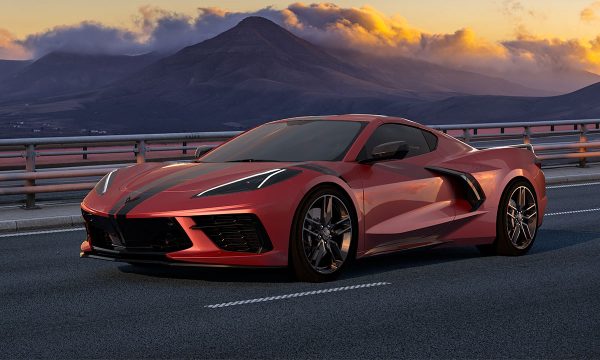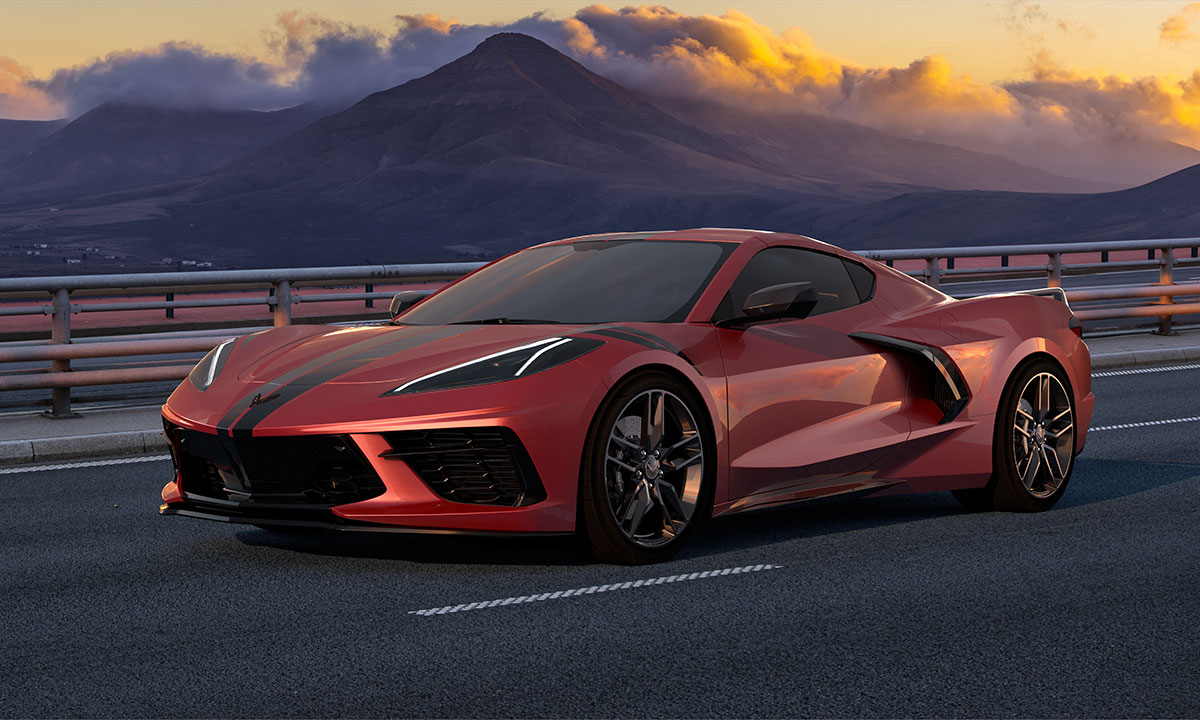More dealership training and facility changes are needed to provide a truly greater customer experience for buying and owning electric vehicles

As manufacturers ramp up electric vehicle production to meet the Canadian government’s mandate to move away from gas-powered cars beginning in 2025 and eliminating them completely by 2035, dealerships are adjusting to new ways of selling EVs to customers.
“I think it’s a totally different sales process, and one that the industry and our company has a lot to do to adjust,” said Norman Hébert Jr., President of Groupe Park Avenue. “There’s a lot more that goes into selling an EV because we’re also selling all of the elements surrounding it. We have to sell things like range, how to travel on holidays, charging and recharging. When we sell a gas-powered car, we don’t have to do any of that because we don’t sell gas pumps.”
Hébert says selling gas-powered vehicles is self-explanatory as consumers are used to the technology. “We may have to tell a customer what type of fuel to put into the car, but for EV we have to explain about charging capacity, weather degradation and all of these new things that are not big deals at all, but for the average salesperson it’s a real shift in the way that they historically sold the products that we sell.”
Silvia Carfora, CEO of the Weis Group, a Toronto-based architecture firm specializing in the execution of automotive retail facilities and customized franchise compliance assessments, said the typical sales process does not serve the EV customer well.
“Old (sales) habits are irrelevant with EVs,” said Carfora. “The EV sales process needs to acknowledge that customers will need to adopt new habits. So how is a typical sales experience going to address the behavioural shifts required to become an EV owner? Buying an EV is not just about branding, vehicle styling and how the vehicle handles. EV adoption requires a behavioural shift.”
She said dealers who are forward-thinking and make investments in critical infrastructure required to sell and service EVs will reap the benefits of being earlier adopters compared with their peers.
“As EVs at dealerships reach critical mass, we will see more competition for electricity resources. Every dealer should be designing their new or renovated facility with EVs in mind to capitalize on economies of scale and infrastructure investments while they are in construction. Capital investments in the right place now can have big savings later on.”
Hébert said his company holds many team meetings specifically to address selling EVs.
“You can call it conversations, you can call it training, you can call it a whole bunch of things, that’s where we are now,” said Hébert. “Our approach is really around how do we get our salespeople excited about EVs? If they’re not excited about them, like anyone they will take the easiest path to sale, which is just selling a nice car.”
Some of that training requires a mindshift change, especially with those that have worked in the industry for a long time.
“What we’ve noticed in our company is that the average salesperson isn’t that excited about EVs for a number of reasons. I think deep down that car salespeople, not unlike dealer principals, are car people, and car people are generally all about engines and sound and power. An EV is not that, power maybe but that’s about it, so that shift is challenging.”
Laura Zanchin, Principal/Vice President of Zanchin Automotive Group, said because supply of EVs are now more plentiful, it has created an interesting sales dynamic.
“When they were scarce, we couldn’t keep them (on the lots), now that perhaps we have a little bit more, it’s a little more challenging,” said Zanchin.
She said her company has urged salespeople to take the EVs home to become more knowledgeable about them so they can impart their personal experiences to consumers.
“It’s not a simple sheet of paper, these are the specs,” said Zanchin. “You have to drive the vehicle, and that’s how we sell them. We try to get our salespeople to at least speak about (EVs to consumers). It doesn’t mean they have to buy. In the end, it’s the consumers’ choice. Nobody is going to sell you an electric car unless you’ve expressed some kind of interest in it. When people express interest, it’s like, ‘Sure, why don’t you take it on a test drive? We know you like your combustion engine, but feel free to experience an EV.’”
She said this try before you buy approach has worked. “They’re astounded. We’ve converted a lot of people like that, and that’s a true testament to a good salesperson. They don’t want to interfere with where your head’s at, but if you haven’t tried it, you should try it. Decide for yourself.”
Similar to its employees, the company is encouraging repeat customers to take the cars for a couple days to learn how they handle.
“Most customers love it, the only real drawback is if you are one of those people who drive 150-300 kilometres a day like I do, it becomes a challenge,” said Zanchin, referring to range issues.
“We have a slogan, ‘we provide, you decide.’ It kind of means everything. Is it a combustion engine? Is it a hybrid? Is it all electric? Is it an SUV? How do you want to be sold? It’s incredible now the different opportunities that you have to be able to offer customers. It’s not as simple as them walking through the doors. It’s how do they want to be addressed?”
Zanchin said her company has invested a significant amount of money for chargers.
“There’s no stopping the EV train,” said Zanchin. “It’s here to stay. You either get on or get off.”
Hugo Jeanson, General Manager and Co-Owner of Quebec-based Bourgeois Chevrolet, which sells more EVs than any dealer in the country, said consumers have been used to driving ICE vehicles for so long they are reluctant to change.
“The challenge is going to be to explain that to the mass of people,” said Jeanson. “The first customers knew about those things. Right now a lot of (consumers) are buying EVs that are not right for them. I think with a good explanation it solves a lot of problems.”
He said the OEMs, dealerships and salespeople have to work hard on training. “That takes time. That’s a challenge also to explain all those things versus just selling the same cars that the customer has previously purchased, which is a lot simpler.”
Carfora from WEIS said certain considerations should be addressed by dealers to ensure smooth operational processes:
- Building a charging schedule during off-peak hours to save on more costly peak-electricity rates;
- Inventory preparation for test drives, sales or servicing;
- Staff and lot inventory flow management to optimize charging; and
- Analyzing where on the lot this may be installed in the future or adding additional conduits for future back-of-house to save on costly and disruptive nuisances like trenching or repaving later on.
“People who are not necessarily customers will still want to charge their vehicle at retail locations,” said Carfora. “This is already happening at various dealerships, and the experience of these ‘charger customers’ is also important. It will be up to these retailers to decide how to leverage this opportunity for their business.”
She said considering how to build this as a revenue-generating opportunity could boost customer and facility experience. “While this may not suit every retail operation, some have leveraged the café hospitality in their facility to offer a destination experience. Considering the location of charging stations should also be a priority to leverage the experience at a facility for guests and customers alike.”
Carfora said sales inventory, service vehicles and customer loaners will all need to be maintained with charging.
“As the industry moves to EVs, retailers should consider how these vehicles will continue running,” said Carfora. “Going to gas stations to fill-up will become less a part of daily operations. It will be the retailer’s responsibility to ensure these vehicles are charged for use based on their sales or service need. One solution to manage charging adequately is a high-density parking cluster. For example, four vehicles may share one charger between them near the back of the facility in the general inventory parking.”
She also said chargers should be strategically placed to be visible as customers are looking at EVs in the showroom.
“Smart and creative showroom designs for EVs are not just about displaying vehicles but providing a comprehensive brand experience that educates, engages and excites prospective buyers,” said Carfora. “By focusing on customer comfort, education, sustainability and the integration of advanced technologies, dealerships can create an environment that not only facilitates the sales process but also fosters a community around the progressive values of electric mobility.”















